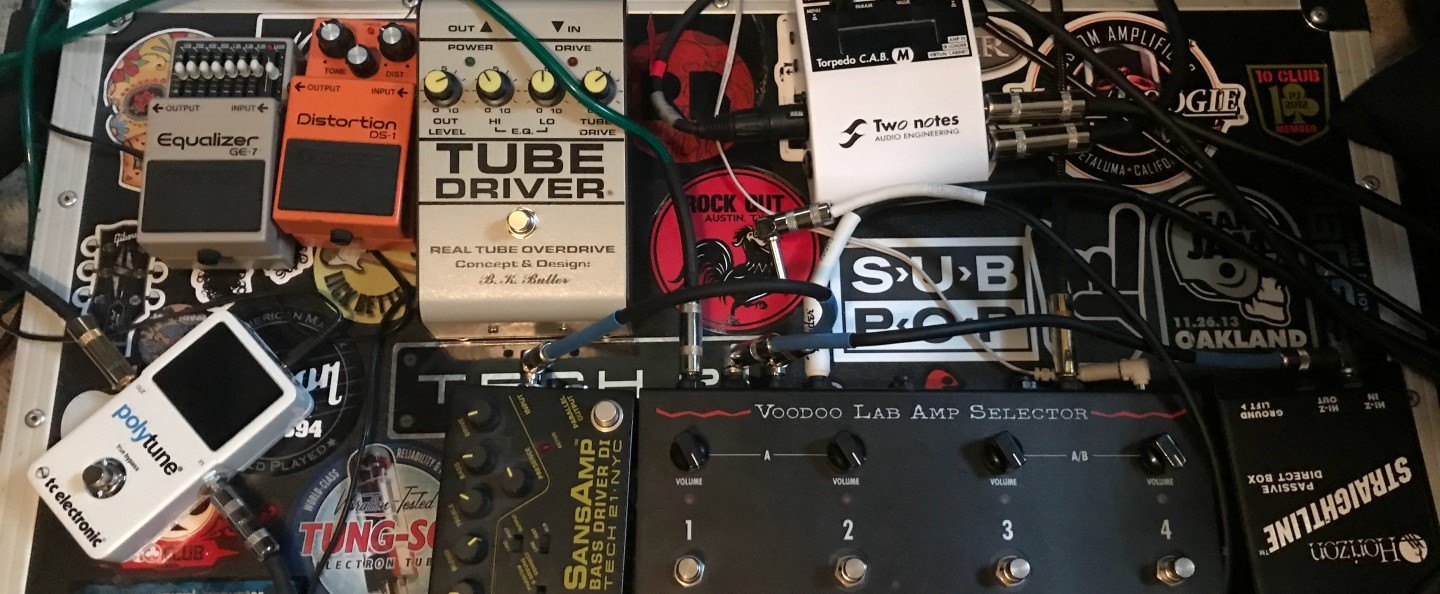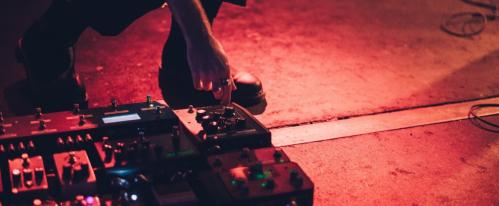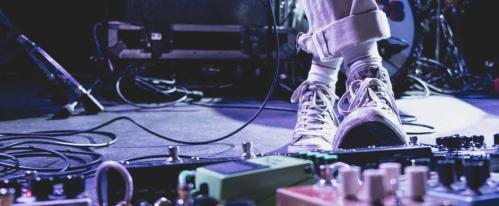Find out how to sound like Sonic Youth with our pick of the best guitars, amps, and pedals for noise rock
With a discography spanning over 25 years, Sonic Youth have channeled some of the most abrasive, discordant, and feedback-heavy guitar sounds imaginable - whilst also indulging in plenty of melodic and beautiful tones, too.
Some popular Sonic Youth guitar techniques include extensive use of alternate tunings, heavy and experimental playing styles, and using ‘Prepared Guitars’ to alter the timbre and tonality of their instruments.
In this blog we’ll look at some different ways to capture the Sonic Youth guitar sound and how to get started with a selection of noise rock tones.
Sonic Youth Guitar Tunings
It’s impossible to sound like Sonic Youth without at least considering their guitar tunings. Between Lee and Thurston they used over 80 different tunings live and in the studio. Here are some of the most popular:
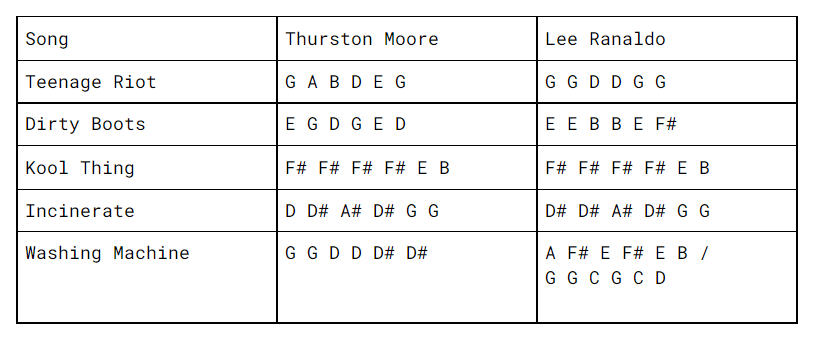
When Kim Gordon wasn’t holding down the groove on bass she also liked to experiment with some really inventive alternate tunings such as B E G D B B on Washing Machine.
Some of these guitar tunings require specialised string set-ups due to how heavily detuned they are across the neck. Look for Extra Heavy strings (such as sets of 12s or 13s) if you plan on playing in some of these tunings.
You can also purchase individual strings from PMT, ideal for setting up in some of the more unique tunings such as those which double up on notes across the neck (F# F# F# F# E B for example).
Sonic Youth Guitar Gear
In this section we’ll look at some of the best modern guitars and amplifiers for getting a Sonic Youth-inspired noise rock tone.
Fender Offset Guitars
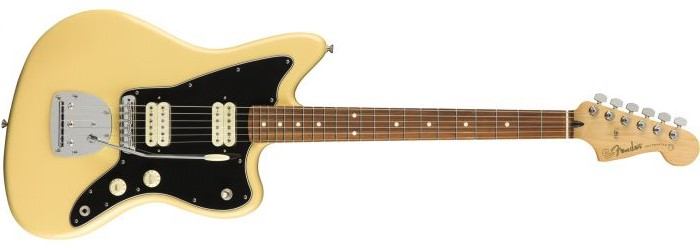
The guitars most commonly associated with Sonic Youth are offset Fender guitars such as Jaguars and Jazzmasters. Originally used due to their low-popularity (and therefore low-cost), these offset models are also ideal for detuning and experimenting with.
The unique vibrato and tailpiece system on these guitars means they lend themselves to the creation of noise and ambience, with sweeping pitch-bends and ‘behind-the-bridge’ picking just a couple of tools utilised by Sonic Youth for their signature sounds.
The band also experimented with ‘Prepared Guitars’ at different times. By using things like drumsticks and screwdrivers to play the instrument or alter the guitar's construction, you can open up a world of new musical possibilities.
Pictured is the Fender Player Jazzmaster PF in Buttercream - a great choice due to its dual humbuckers and coil-splitting capabilities.
Fender Amplifiers
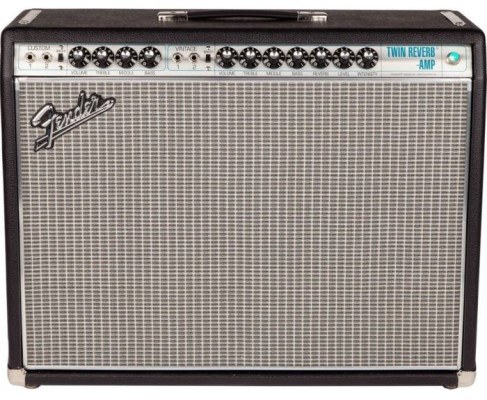
Both Thurston Moore and Lee Ranaldo are big fans of Fender amplifiers, and this 68 Custom Twin Reverb is an outstanding reissue for those chasing that elusive sound.
With full-tube tone, reverb, and vibrato across both channels, this amplifier can give you the perfect clean platform to build your FX rig from.
Peavey Heads & Marshall Cabinets
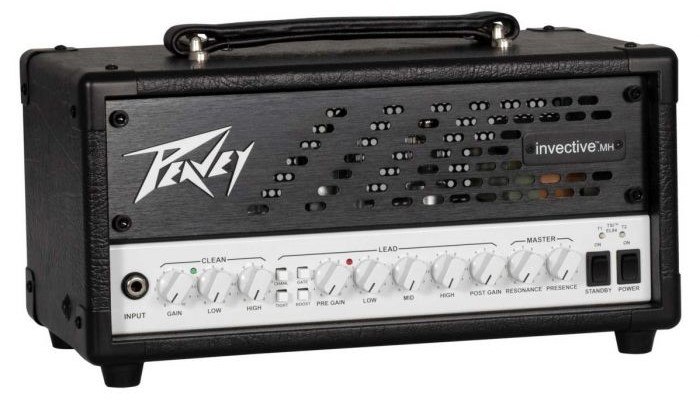
Thurston Moore is known to run a vintage Peavey Amp Head into a Marshall Cabinet for his sound, and nowadays there are plenty of ways to channel this sort of set-up into your rig.
The Peavey Invective Mini Head has two channels - one ‘clean’ channel for attacking with your full effects rig, and the other ‘hi-gain’. This second channel is based on the legendary 6505 amplifier which Thurston has previously used, allowing you to really push the amp and play along with the feedback.
Marshall Cabinets are expertly-designed to handle this palette of tones, with a selection of speaker options and voicings available.
For a range of Marshall Cabinets, check out our stunning range here:
Marshall Combo Amps
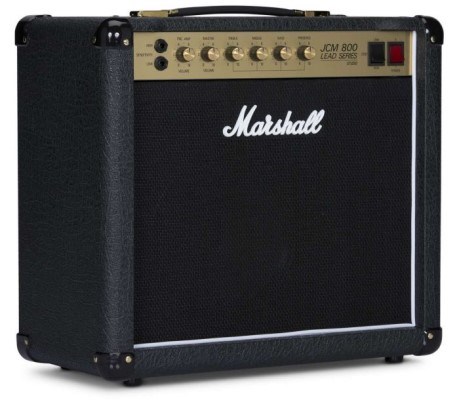
If you’re after these sorts of tones but don’t fancy hosting a full-stack in your bedroom, check out this Marshall Studio Classic SC20C Valve Combo.
This amp is able to switch from 20W to 5W for comfortable levels at rehearsal or at home, meaning it sounds great on recordings too.
When you do crank it however, the SC20C also features bags of headroom for sending even the most fizzy and distorted effects through it with clarity and precision - just like Sonic Youth.
What Pedals Did Sonic Youth Use?
When building a Noise Rock pedalboard it’s important not to get too bogged down with finding the exact stompboxes that your heroes have used.
Sonic Youth are known for using a wide, wide variety of vintage and rare pedals that can be hard to track down - but by experimenting with modern effects you can replicate their tones and start generating your own distinctive set-up.
The main components of any noise-based rig will be distortion, but it’s important not to forget about things like Compressors, Equalization, Reverbs and Delays.
Here are some of our favourite Sonic Youth Effects Pedals..
Russian Big Muff
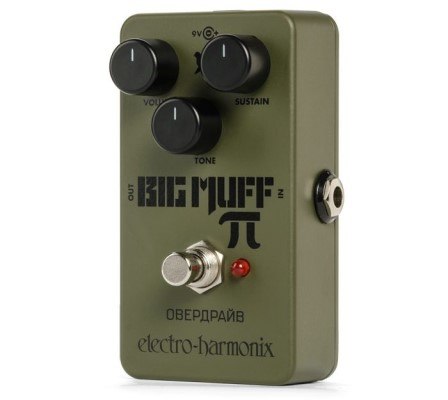
Thurston Moore is known for using a Civil War-era ‘Sovtek’ Big Muff, and this reissue from Electro-Harmonix manages to nail the sounds that made the vintage unit so sought after.
Housed within a distinctive Military Green chassis, the sound from this pedal is thick and filled with tone despite its smaller, pedalboard-friendly size.
The controls on the Russian Muff allow for a full-range of equalization and sound sculpting - this pedal is capable of taking you anywhere from subtle distortion to all-out fuzz insanity.
ProCo Rat2
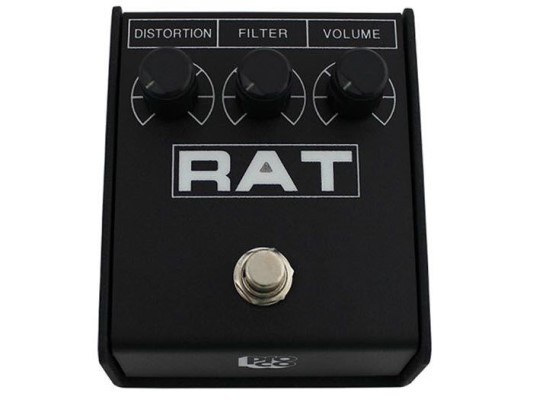
Sonic Youth were also notable fans of the ProCo Rat pedals - and the latest Rat2 model features all of the same iconic tones for nailing your favourite noise rock riffs.
The Rat2 can be used as an Overdrive, Distortion, or Fuzz depending on how the Filter is set and how much Distortion is dialled-in, and this means these pedals are also great for stacking up alongside other fuzz and distortion units for some really heavy sonic exploration.
Try a Rat pedal with some prepared guitar techniques to get even more from it.
MXR M104 Distortion Plus
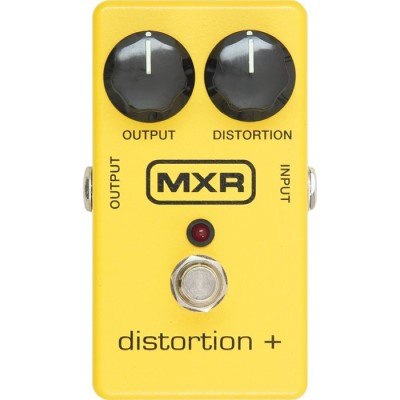
This germanium-powered distortion is technically meant for 80’s hard rock tones, having found fans in players such as Steve Vai and Randy Rhoads. A vintage-version has been spotted on Thurston’s pedalboard in the past too, so it’s an excellent choice for this set-up.
The simple two-knob design is wonderful for stacking alongside other pedals, something you’ll definitely need to be doing to find unique tones the likes of which Sonic Youth are renowned for.
Placed in front of a vintage-styled amp this pedal will increase your range of distorted tones massively - allowing you complete flexibility when playing live and in the studio.
BOSS CS-3 Compression Sustainer
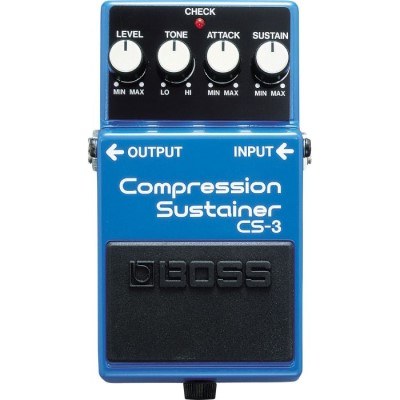
A compression pedal is particularly useful when using diverse guitar sounds - it allows your overall tone to remain ‘smooth’ and constant, so no matter if you’re distorted or clean it will fall into a live-band mix perfectly.
The BOSS CS-3 Compression Sustainer is an industry-standard pedal and one that Lee Ranaldo has often been seen to run in his FX chain. It has a selection of controls so that even in the most dense and noisy live setting you can ensure your tone cuts through.
The tone knob in particular is one of our favourite features, allowing you to compensate for any lost Treble frequencies caused by the compression.
MXR M109S Six Band EQ Pedal
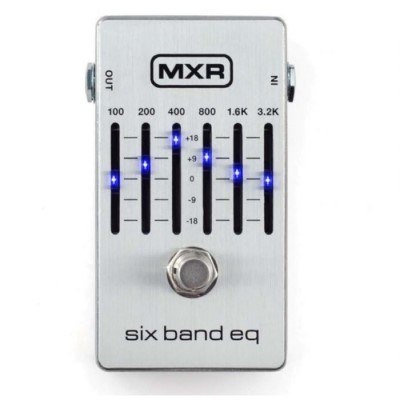
An Equalizer pedal is another great addition to your pedalboard, allowing you to cut and boost the exact frequency ranges that you need to.
They’re one of the best tools for eliminating feedback even when using hi-gain tones from your distortion pedals and dirty amp channels, as well as giving you a clean boost when you need one.
This MXR M109S has an intuitive 6-band EQ with +/-18db to accurately shape your sound, no matter if you’re playing live or recording.
Fender Mirror Image Delay
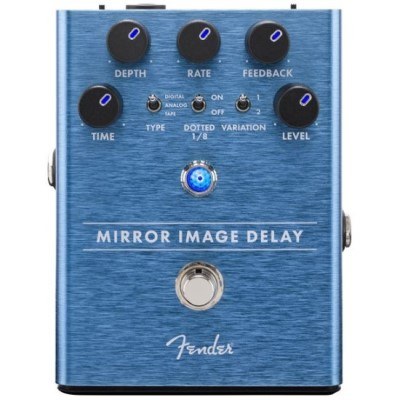
The Fender Mirror Image Delay is a superb option for all of your time-based FX needs.
With Digital, Analog, and Tape-modelling options (each with two separate variations), this unit can perform a range of different functions which will save the need to run a number of separate stompboxes.
The control panel includes knobs for Depth, Rate, Feedback, Time, and Level, so you have complete command over your sound.
Earthquaker Avalanche Run V2 Stereo Reverb and Delay
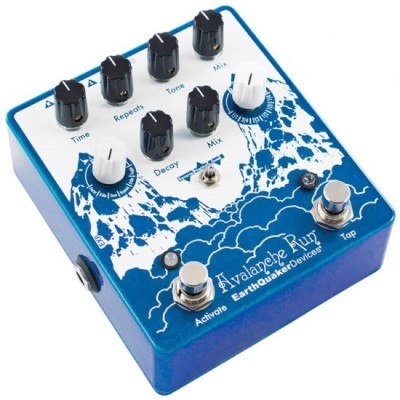
This pedal is used by Lee Ranaldo for its insane Reverb and Delay capabilities.
Featuring a wealth of controls, tap tempo, and connectivity for an additional expression pedal, the Earthquaker Avalanche Run V2 is an awesome choice for adding some otherworldly tones to your noise rock set-up.
With stereo output, reverse reverb settings, and up to 2s of delay time, the options are near-enough infinite.
This pedal is truly a force to be reckoned with, and it’s no surprise to see it living on so many experimental pedalboards.
Want to know more about a particular Sonic Youth pedalboard? Need some help with alternate guitar tunings? Call us on 0151 448 2089 or check out your local store to speak to one of our Experts about your needs.

